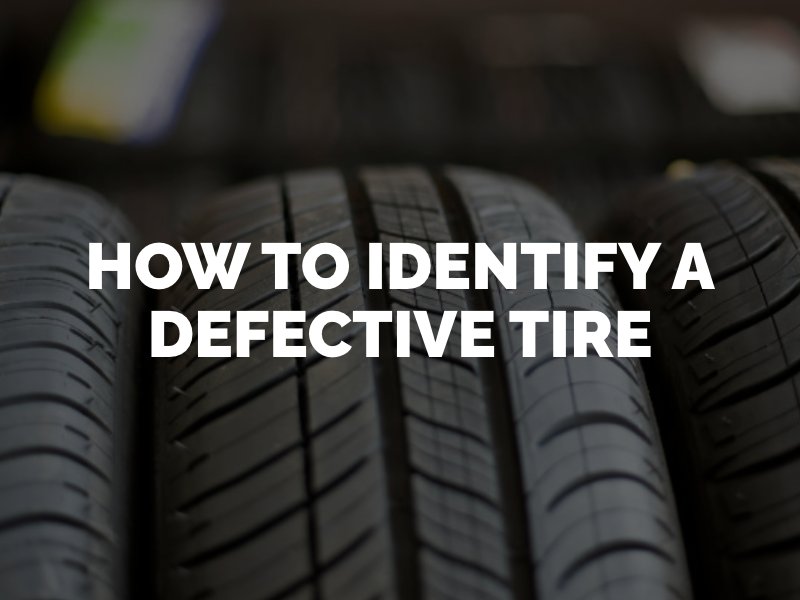How Can You Tell if a Tire is Defective?
Tires are an essential part of a vehicle, as they are responsible for maintaining traction with the road surface, absorbing shock, and providing a comfortable ride. However, like any other mechanical component, tires can be or develop defects that compromise their safety and performance which can lead to a car accident. Here is how to tell if a tire is defective.

Uneven Wear Patterns
One of the most common signs of a defective tire is uneven wear patterns. This is typically caused by misalignment, over or underinflation, or other issues that cause the tire to wear out unevenly. If you notice that the tread on one side of the tire is significantly more worn than the other, it clearly indicates that something is wrong with the tire. Uneven wear can also cause the tire to vibrate, leading to a rough ride.
Cracks or Bulges
Another sign of a defective tire is the presence of cracks or bulges on the sidewall or tread. These can be caused by age, exposure to extreme temperatures, or impact damage. Cracks and bulges weaken the tire’s structure, making it more susceptible to blowouts, punctures, and other failures. If you notice any cracks or bulges on your tire, it is important to have it inspected by a professional.
Excessive Vibration
If your vehicle vibrates excessively while driving, one or more of your tires might be defective. Vibrations can be caused by a number of issues, including misalignment, worn suspension components, or a damaged tire.
Loss of Air Pressure
Tires naturally lose air pressure over time, but if you frequently need to add air to a particular tire, it could be a sign of a slow leak or a puncture. A tire with low air pressure can cause uneven wear, reduced fuel economy, and even blowouts at high speeds.
Noises
If you hear any unusual noises coming from your tires, such as squealing or grinding, it could mean the tire is defective. These noises can be caused by worn brake pads or a damaged tire.
The Dangers of a Defective Tire
A defective tire can significantly increase the risk of an accident and injuries in the following ways:
- Reduced Traction: A tire with worn-out treads or uneven wear patterns will have reduced traction, especially on wet or slippery roads. This can lead to loss of control, especially during sudden maneuvers such as hard braking or swerving.
- Blowouts: Defective tires can suddenly burst or blow out, causing the driver to lose control of the vehicle. This can be especially dangerous at high speeds or in heavy traffic, where there is little room for error.
- Increased Stopping Distance: Worn or defective tires require a longer distance to stop the vehicle.
- Increased Risk of Hydroplaning: Tires with worn-out treads are more likely to hydroplane on wet roads.
- Suspension Damage: Defective tires can also cause damage to the suspension components of the vehicle, affecting the handling of the vehicle, which can increase the risk of an accident, especially during sudden maneuvers.
Who Is Liable for an Accident Caused by a Defective Tire?
Several parties can potentially be liable for an accident and injuries caused by a defective tire:
The Manufacturer
If the tire was defective due to a manufacturing error or design flaw.
Retailer
If the tire was sold with a known defect or the retailer failed to provide adequate warnings about potential dangers.
Installer
The installer may be liable if the tire was improperly installed or maintained.
Determining liability for an accident caused by a defective tire will depend on several factors, including the cause of the defect, the parties involved, and the circumstances of the accident. If you have been involved in an accident caused by a defective tire, it is essential to speak with an experienced Los Angeles Tire Defects Attorney to discuss your legal options and determine the best course of action.
